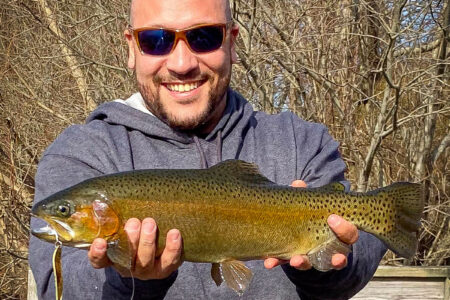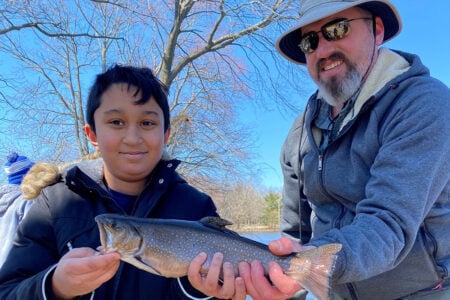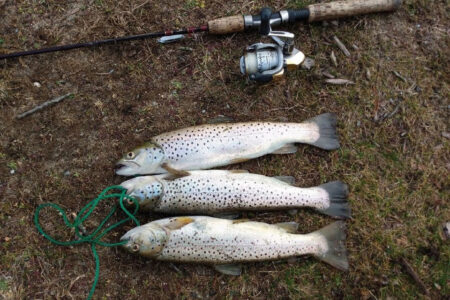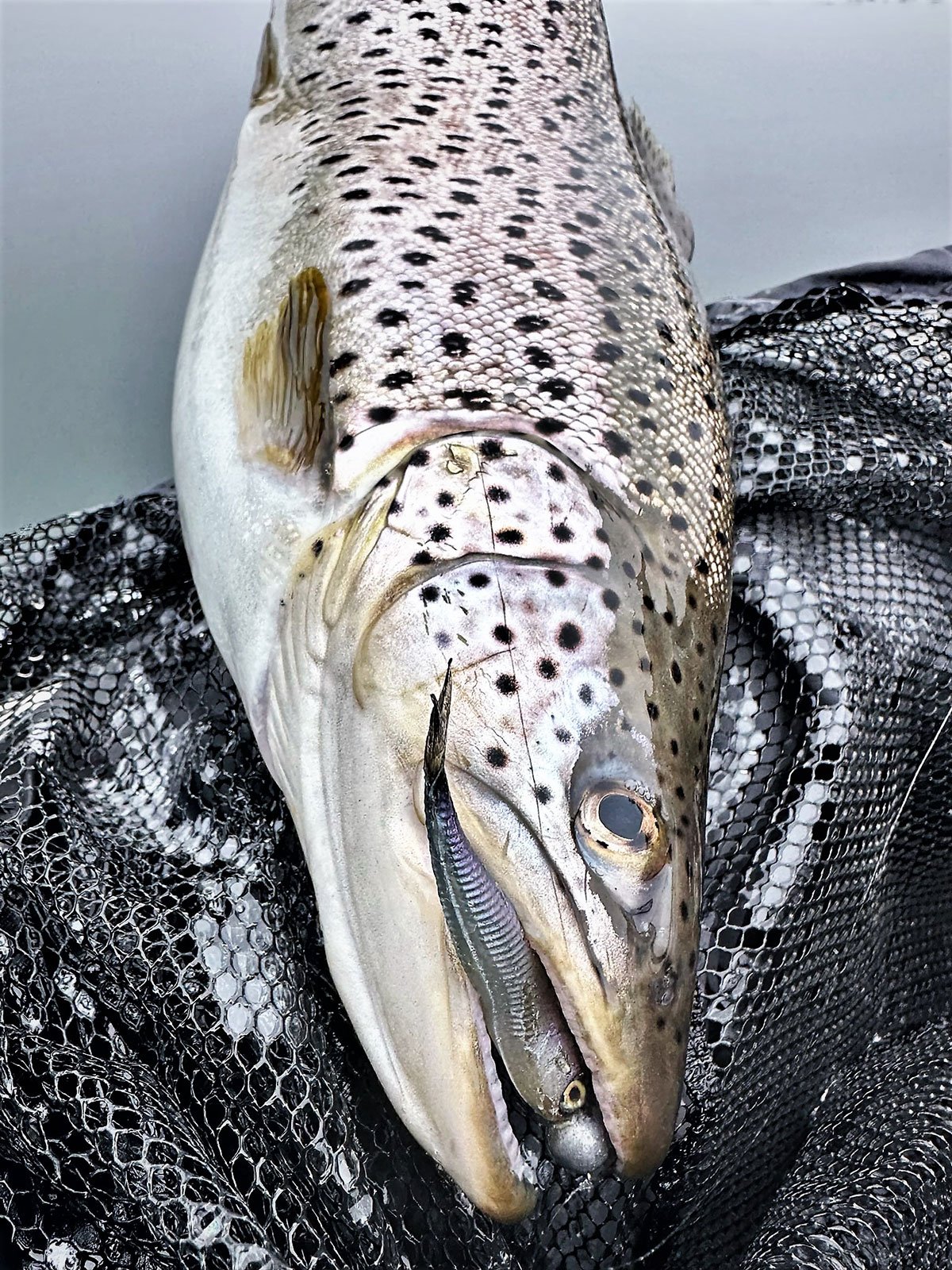
This fast-growing, long-living strain of brown trout is back in Connecticut waters!
On the morning of June 30, 2011, Tony Urbanowicz was slinging metal lures from the banks of Connecticut’s Saugatuck Reservoir when something special happened. After a long cast, he let his Yo-Zuri L Jack jig flutter to the bottom and began reeling. A few cranks into the retrieve, all hell broke loose. No stranger to surfcasting, Tony had tussled with big fish before – this was different.
It took over 30 minutes of battling on eight-pound test before the fish slid to shore. Lying before him was a massive 32.25-inch long, 21-inch round brown trout, one Tony thought could topple the state record that had stood for 25 years. Soon enough, on a certified scale at a Swanson’s Fish Market, he had his answer. The 18.34-pound behemoth would go on to become the official brown trout record for the Nutmeg State.
It didn’t last long. In December 2014, the bar for brown trout in Connecticut was raised even higher when a 33-inch, 19-pound giant from West Hill Pond was landed by James Lucas, who still holds the top spot today. Then, only four months later, footage surfaced of a bass angler showing off a mammoth brown trout he fooled on a spinnerbait at Highland Lake. If weighed on an official scale instead of released, it would have no doubt given the newly crowned record a run for its money.
What could explain three of the biggest trout in Connecticut history being caught in just a few-year span? These fish were Seeforellens, or “Seefs,” a unique strain of brown trout originating in deep, cool lakes of Europe, and raised in Connecticut’s hatchery system since the early 90s. What makes Seeforellens so distinctive is that they are a late-maturing fish that tend to grow very large and live quite a long time. This allows them to become bigger and older than most other strains of brown trout. Now, after a several-year hiatus, this super strain is back in the mix.
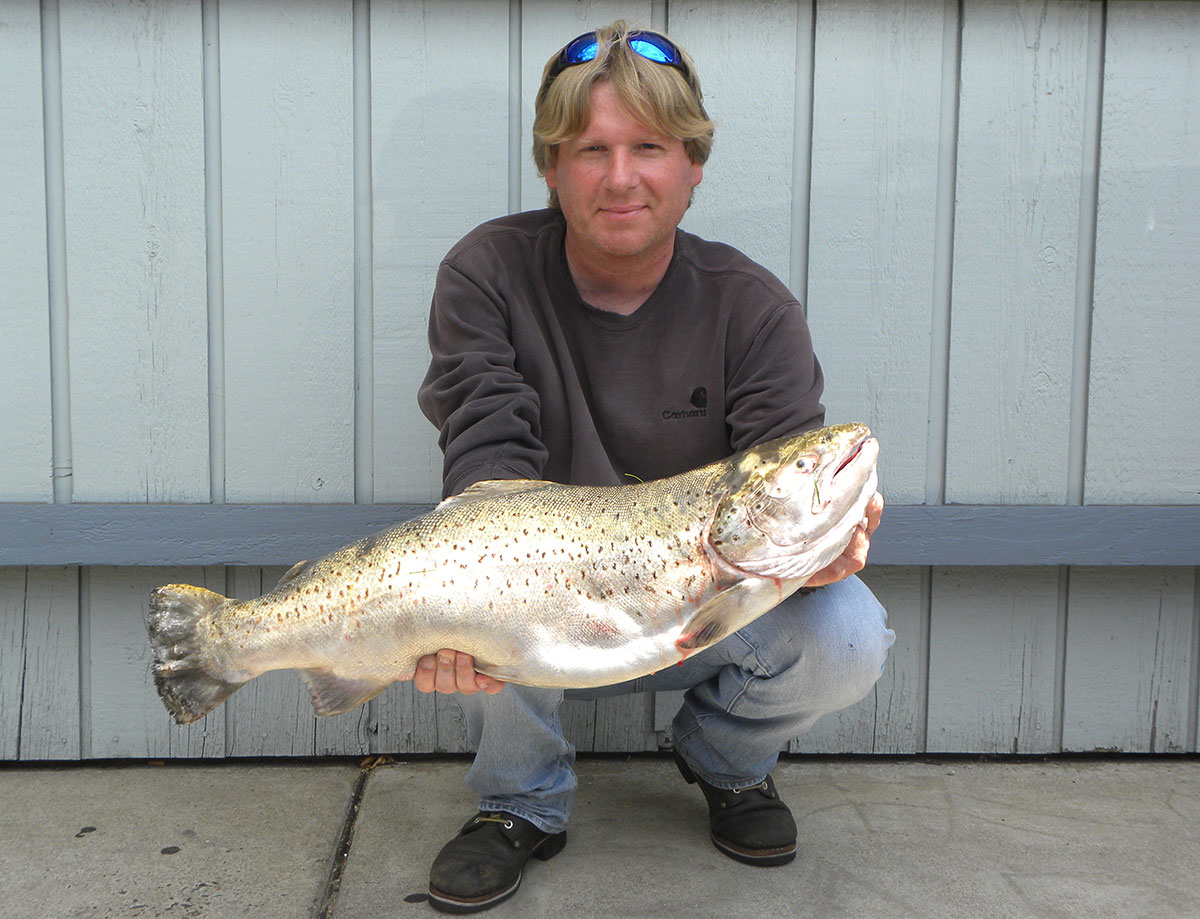
History
The Seeforellen’s debut in the U.S. is believed to have been in 1979, when New York’s DEC orchestrated a shipment of fertilized eggs to rear and stock in their large, deep lakes. They were descendants of fish from alpine lakes in the Bavarian region of Germany. The very name Seeforellen, a mash up of two German words (See + Forellen), translates to “lake trout.” While not the lake trout species most Northeast anglers are familiar with, these are true coldwater, lake-dwelling creatures all the same.
Seeforellen eggs were first brought to Connecticut’s Kensington State Fish Hatchery in 1992 and two years later the initial class of fish was stocked in a handful of lakes to asses and compare with the more common Cortland strain of brown trout. Drew Ransom, a Coldwater Fisheries Biologist with CT DEEP’s Inland Fisheries Division, helped shed light on the early findings.
“The survival of the Seeforellen strain was pretty similar to the Cortland strain, but the growth rates were way higher,” explained Ransom. “The Seefs tend to mature a year or two later than the riverine strains and, because of that, they put all of their energy into growing really big, really fast. They can get huge if they live long enough and have enough food. That’s why they were brought here in the first place—to get big trout into Connecticut lakes.”
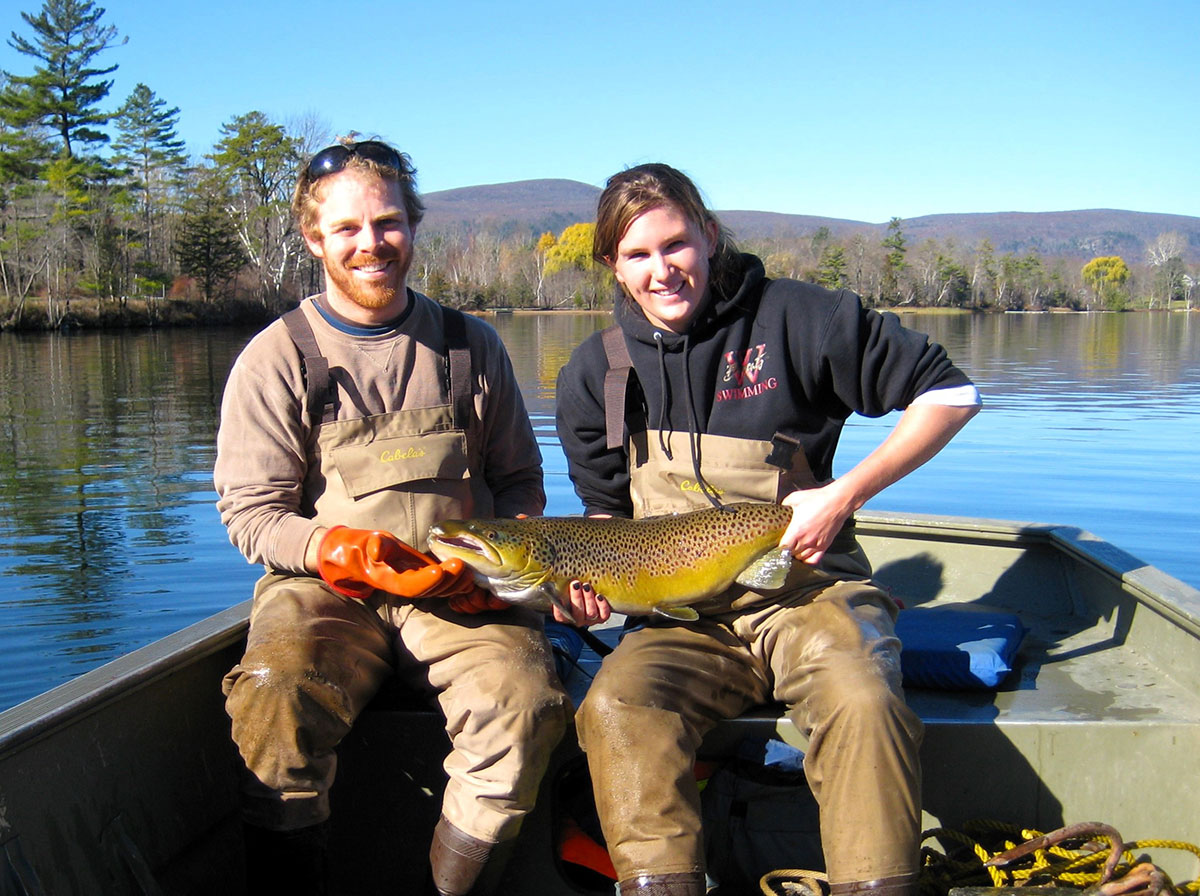
Where To
For consistent brown trout survival from one year to the next, no matter if it’s Cortlands or Seeforellens, abundant forage and suitable coldwater habitat are needed. Though it’s a small state, Connecticut boasts its fair share of waterbodies that meet these criteria, and that is where DEEP has focused their Seeforellen stocking efforts, particularly in East Twin Lake, Lake Wononskopomuc, and Saugatuck Reservoir.
“These three lakes are where we expect the most holdover potential,” explained Ransom. “They have the alewives for food, they have enough coldwater with enough oxygen to support holdovers, and conservative regulations to promote larger fish.”
DEEP manages these select lakes as part of a “put-grow-catch” program, stocking around 6,500 yearlings between them each spring. It takes about four years for these minimum six-inch Seefs to grow to 20 inches, and here they have the best chance to reach the elusive 30-inch class, as confirmed time and time again during Fisheries Division population surveys.
A host of other waterbodies, many classified as Trout Management Lakes, receive larger size Seeforellen each fall, including several thousand yearlings that are kept at the hatchery through summer to reach a minimum of 12-inches. Also stocked in the fall are approximately 400 2-year-old Seefs and a few dozen 3-year-old retired breeders. The former averaging 5 pounds each and the latter an impressive eight to 10 pounds each. This annual fall stocking provides an immediate, though more short-lived, fishery due to habitat and forage limitations.
Stocking of the larger adult Seeforellens is dependent on how many fish the Fisheries Division have available. Some years there are more than others for reasons like bird predation at the hatchery. Sometimes a bonus lake is added, but the following locations consistently receive Seefs: Amos Lake, Beach Pond, Black Pond, Crystal Lake, Highland Lake, Long Pond, Mashapaug Lake, Quonnipaug Lake, Rogers Lake, Squantz Pond, and West Hill Pond. Trout anglers and DEEP alike want to see more of this strain, but rearing them is not a walk in the park.
“They’re unfortunately sort of hard to raise in the hatchery, even to fingerling size,” said Ransom. “They have to be raised at a lower density because they are more prone to disease than your normal hatchery strains. The Seeforellens are sort of a different beast.”
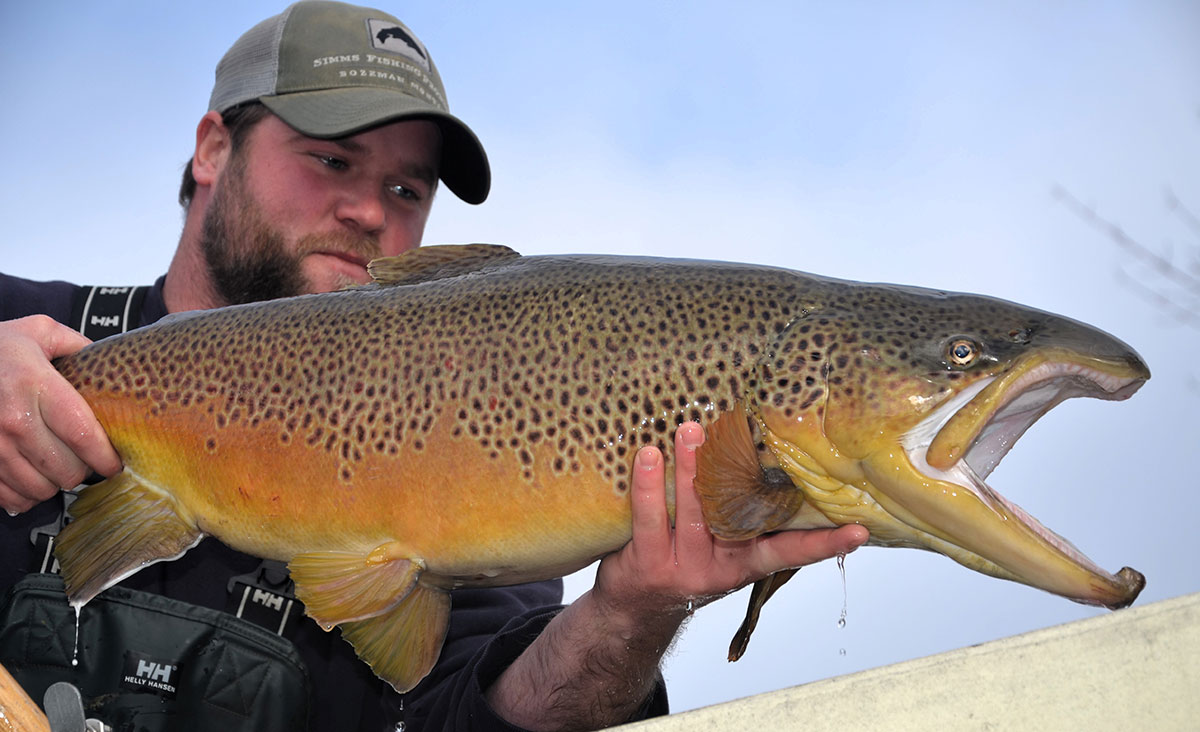
Troubled Waters
Despite the Seeforellen’s success and popularity in Connecticut, the program has experienced some drama along the way. In 2009, an outbreak of the disease furunculosis at the Kensington facility shut down production for two whole years. Fortunately, the Fisheries Division was able to restart the strain again in 2011, but in order to do so, a large number of disease-free breeders were retained at the hatchery much longer than normal. In 2014, it was decided that these fish, now past their prime and too large for the facility, should be stocked to free up space and create once-in-a-lifetime opportunities for anglers.
The 400 surplus breeders, averaging 15 pounds with some over 20 pounds, were divvied up evenly between eight Connecticut lakes. This fueled debate as Seefs larger than the brown trout record at the time were among those stocked. It also created plenty of buzz as the stockings were live-streamed on social media. Sure enough, just days later days, James Lucas landed the current state record.
All while this was happening, a substantial budget deficit in Connecticut had legislators scrambling for cost-saving measures in every state agency. For years there were proposals to permanently close Kensington, home not only to all Seef production, but also the Atlantic Salmon Legacy Program designed to preserve genetic integrity of the Connecticut River strain. The angling community banded together to halt Kensington’s closure, yet in 2016 the difficult decision was made to cut the Seeforellen program.
In early 2017, the last remaining 500 Seeforellen broodstock were unceremoniously stocked and a two-decade run of these supersize brown trout had come to an end in Connecticut. Or did it?
In a wise move, the Fisheries Division donated 110,000 fertilized Seeforellen eggs to the State of Maine, who had intentions of starting its own production program. The hope was that, under a better fiscal environment in the future, there might be an opportunity to re-establish production of the Seeforellen strain, with eggs supplied back to Connecticut from Maine.
Legend has it, some old guard Fisheries Division staff secretly kept one-year class of Maine-bound eggs at the Kensington facility all along. A few years later in 2019, when the state budget improved and the program was greenlit again, wouldn’t you know that the hatchery conveniently had a couple hundred Seeforellen breeders at the ready. Fortunately, in 2021, the Fisheries Division resumed stocking of Seefs into Connecticut waters, each one marked with an adipose fin clip to differentiate from other strains.
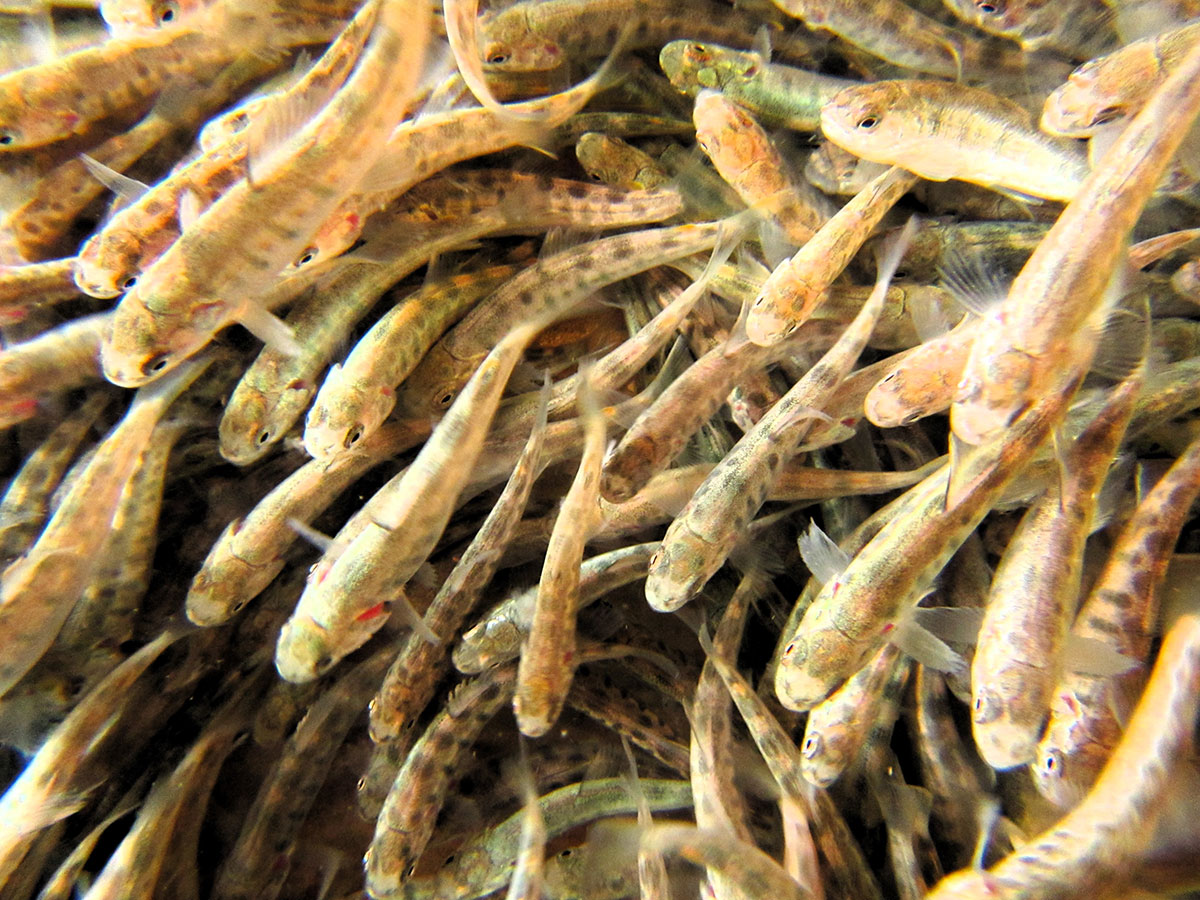
How To
Seeforellens behave like any other brown trout in lakes and ponds, and can be targeted with the same angling tactics and methods. A key to success is matching their chief food supply in Connecticut waters, landlocked alewives. Generally, Seefs are only stocked in lakes where these baitfish have a presence and, as the saying goes, find the bait and you’ll find the fish.
Casting and retrieving metal lures can be an effective strategy. Spoons like Krocodiles and Kastmasters have superior casting ability and, between their size and flash, mimic alewives well. Varying the sink time of the lure before reeling allows anglers to target different parts of the water column.
Other productive artificials include a wide array of soft plastics that closely imitate alewives. When threaded on a lead head and vertically jigged, these can be irresistible to trout. Attractants can help get more attention as trout are big on scent. Many products like Berkley Gulp! come with it already built-in, or you can apply your own scent such as a fish oil.
| KNOW BEFORE YOU GO |
| In 2022, fishing regulations changed for East Twin Lake and Lake Wononskopomuc. Anglers are only allowed to take one brown trout per day, providing it is at least 22 inches. During ice fishing, anglers are only allowed to use a total of two devices (not the normal six).
With the exception of Saugatuck Reservoir, all of the lakes that have Seeforellen are open to fishing year-round. Be sure to check DEEP’s latest Fishing Guide for the regulations on specific bodies of water. For information about the fishing rules at the Saugatuck Reservoir, visit aquarionwater.com. |
Fishing with bait, specifically live minnows, is another reliable technique. Slip bobbers allow anglers to set their offering at a predetermined depth, which can be helpful if you know there are trout feeding on schools of bait in a particular part of the water column.
For boat or kayak anglers, trolling is also a proven method. Let the trout determine your trolling speed and depth, but as a general rule of thumb, lures or flies slowly trolled between one and two MPH is a good pace to start with.
If temperatures allow, ice fishing is a fun and fruitful way to target Seefs, but the type of cold needed to freeze the lakes these trout are in have been in short supply the last few years. Whether on ice, boat or kayak, it cannot be overstated just how indispensable electronic fish finders are for locating bait and dialing in your presentation.
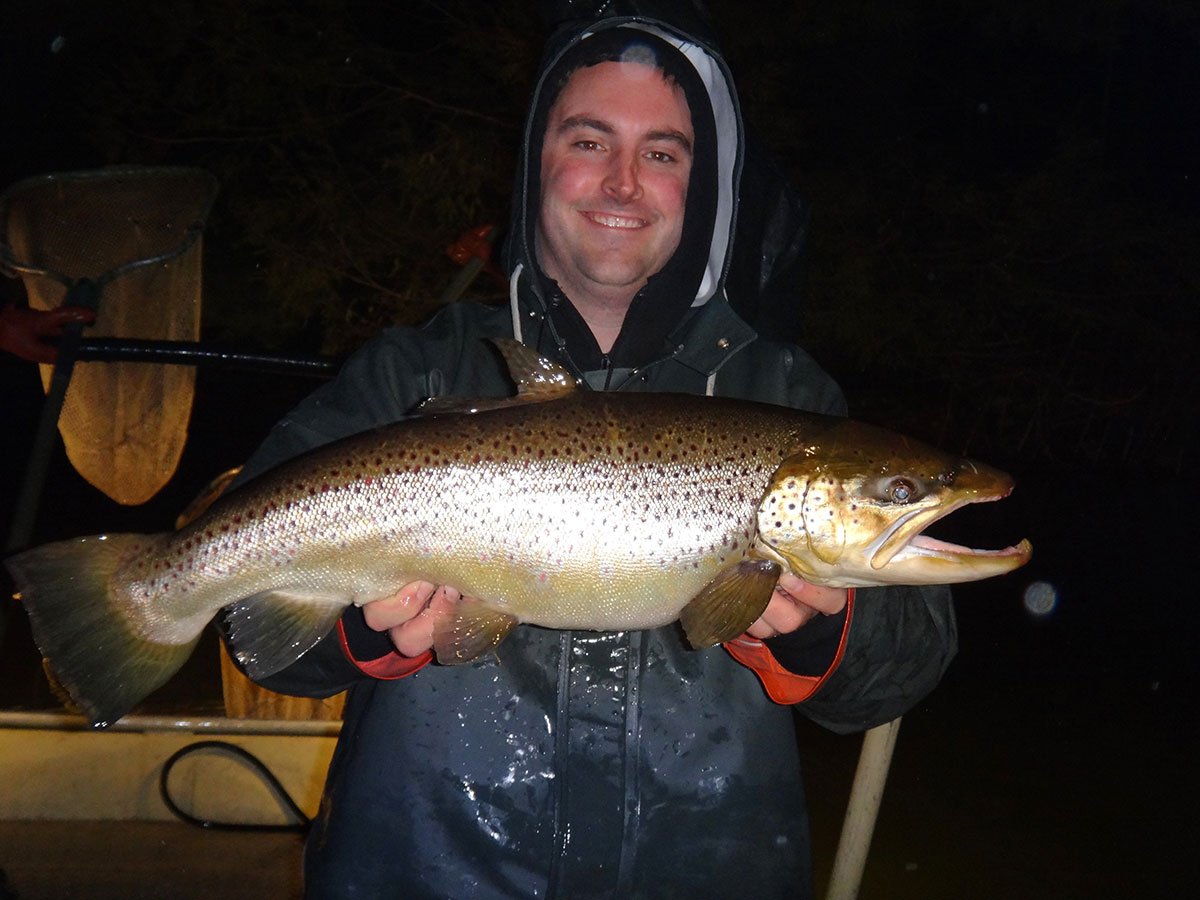
Here To Stay
Now in the fourth year of stockings since the Seeforellen program was re-established, anglers are just starting to reap the full benefits. Because of the strain’s fast growth rates and long-life expectancy, expect to see some truly giant brown trout catches in the years ahead, and don’t be surprised by another flurry of the state record changing hands.
“We know how special the Seeforellen fishery is,” concluded Ransom. “We’re trying to keep it going as long as we can.”

